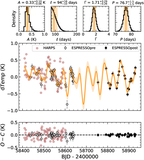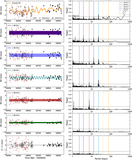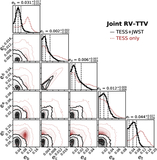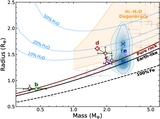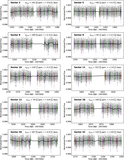Image Details
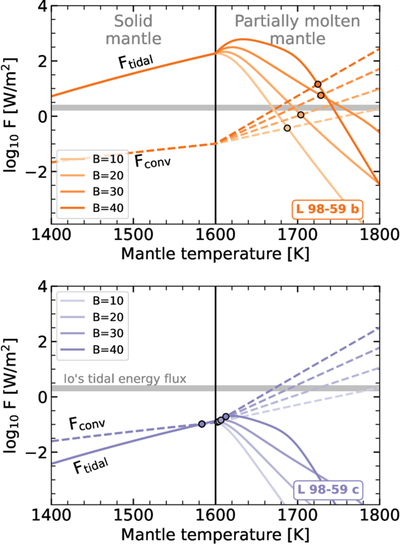
Caption: Figure 9.
Internal energy balance inferred with melt (M. S. Peterson et al. 2023) for L 98-59 b (top panel) and c (bottom panel) as a result of tidal heating. We show the tidal heating flux per unit surface area (solid lines) and the convective heat flux (dashed lines) as a function of mantle temperature, with the equilibrium points shown as circles, colored according to the value of the melt fraction coefficient B adopted in the model (methods in Appendix C.3). The solidus temperature is shown as the vertical black line. The equilibrium happens beyond the solidus for L 98-59 b, at similar heat fluxes to those inferred for Jupiter’s moon Io, implying a potential molten magma layer under the planets’ surfaces, which could be conducive to active volcanic activity. The lower eccentricity-driven tidal flux for planet c results in equilibrium mantle temperatures consistent with a solidified mantle or marginally beyond the solidus. Under these conditions, we cannot conclude that L 98-59 c has a partially molten mantle layer.
Copyright and Terms & Conditions
© 2025. The Author(s). Published by the American Astronomical Society.




